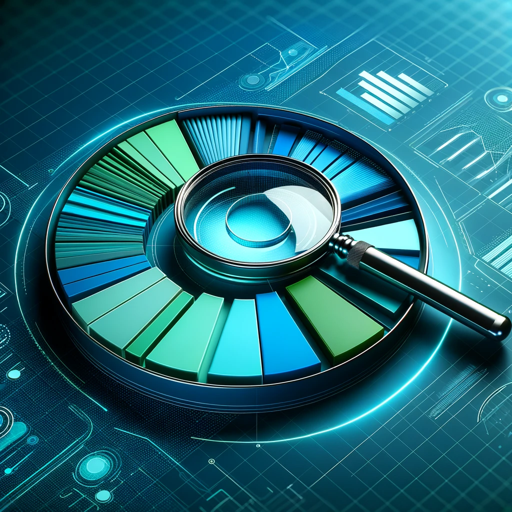IT-Security & Data Protection-IT-Security & Data Protection tool
AI-powered IT security and compliance monitoring
Wie implementiert man ISO 27001?
Tipps für effektives Risikomanagement?
Erstelle mir ein Sicherheitskonzept für mein Unternehmen.
Welche Arten von Fingerabdrucksensoren gibt es?
Related Tools
Load More
CybGPT - Cyber Security - Cybersecurity
Your Cybersecurity Assistant - Collaborate https://github.com/Coinnect-SA/CybGPT

IT Assistant
Expert-level IT professional for advanced, technical discussions.

Ciberseguridad -CISO- Seguridad de la Información
NIST, ISO 27001, CISO, CISSP, CISM, CISA, y OSCP.

IT Help
🔷#𝟏 𝐈𝐧𝐟𝐨𝐫𝐦𝐚𝐭𝐢𝐨𝐧 𝐚𝐧𝐝 𝐓𝐞𝐜𝐡𝐧𝐨𝐥𝐨𝐠𝐲 𝐇𝐞𝐥𝐩 𝐓𝐨𝐨𝐥🔷

Security Architect
An experienced security architect with over 20 years in security across all technology domains.
Datenschutz Assistent
Beratung zu Datenschutzbestimmungen mit Fokus auf DSGVO, BDSG, LDSG, TTDSG, ePrivacy, NIS2
20.0 / 5 (200 votes)
Introduction to IT-Security & Data Protection
IT-Security (Information Technology Security) & Data Protection aim to safeguard information assets against unauthorized access, theft, or damage, ensuring the confidentiality, integrity, and availability of data. IT-Security encompasses various technologies, protocols, and processes designed to defend information systems. Data Protection, on the other hand, focuses on privacy aspects, especially in light of laws like the GDPR. These functions are crucial in preventing cyberattacks, data breaches, and ensuring compliance with legal frameworks. For instance, securing personal data of customers in a financial institution from cyberattacks through encryption and access controls, or ensuring data integrity in healthcare through regular backups and secure data transmission protocols, exemplify the intersection of IT-Security and Data Protection. Both play significant roles in risk management and legal compliance frameworks, particularly in industries like finance, healthcare, and government sectors.

Main Functions of IT-Security & Data Protection
Access Control
Example
Restricting access to sensitive data through multi-factor authentication (MFA) systems in a financial organization.
Scenario
In a banking environment, MFA prevents unauthorized individuals from accessing clients' financial records by requiring two or more verification methods.
Data Encryption
Example
Using end-to-end encryption in messaging apps like WhatsApp to secure user conversations.
Scenario
In healthcare, encrypted communication ensures that sensitive patient data shared between doctors is secure and cannot be intercepted by unauthorized entities.
Incident Response & Recovery
Example
A hospital's IT team deploying a disaster recovery plan after a ransomware attack, ensuring minimal downtime and restoration of patient records from backups.
Scenario
Following a malware breach in a hospital system, an automated backup and recovery plan ensures that patient data is restored without manual intervention, maintaining the integrity and availability of critical health services.
Ideal Users of IT-Security & Data Protection Services
Financial Institutions
Banks and financial service providers handle large volumes of sensitive personal and financial data, making them prime targets for cyberattacks. They benefit from strong access controls, encryption, and compliance frameworks like PCI-DSS to protect customer data.
Healthcare Providers
Hospitals and clinics handle sensitive health information, which requires secure storage and transmission. IT-Security is crucial in maintaining the confidentiality and availability of patient data, while Data Protection ensures compliance with healthcare regulations like HIPAA and GDPR.

How to Use IT-Security & Data Protection
Visit aichatonline.org for a free trial without login
Start by accessing the website to explore the tool’s capabilities without the need to log in or subscribe to ChatGPT Plus.
Understand your security and data protection needs
Identify your primary areas of concern, such as compliance, risk management, or specific vulnerabilities in your IT infrastructure.
Configure and customize the tool
Set up the tool to monitor critical areas by configuring it according to your organizational requirements and aligning with ISO 27001, 31000, or 9001 standards.
Integrate with existing systems
Seamlessly integrate the tool with other systems such as CRM, ERP, or cloud services to get a comprehensive security overview.
Regularly monitor and update
Ensure ongoing monitoring, audits, and updates for maximum efficiency and security, responding quickly to any identified threats or compliance issues.
Try other advanced and practical GPTs
Market Research Assistant
AI-Powered Market Research Insights

Eduverse Summit Promoter
AI-powered summit management for education leaders

Indian Cuisine Helper
Discover the magic of Indian cuisine with AI

Indian Stock Market
AI-powered insights for smarter investing

Storyteller Wesley
AI-powered storytelling for engaging content

League of Legends Challenger Coach V3.0
AI-powered personalized LoL coaching

Expert Panel v2.0
AI-powered multi-expert discussions for all.

Albert Einstein's Debate Panel
AI-powered debates, moderated by Einstein.

Panel Scene Illustrator
AI-powered comic strip creation tool

True Review GPT
AI-powered tool for reliable reviews.

Negotiate GPT
AI-Powered Negotiation Mastery.

C#: Xamarin Cross-Platform App Development
AI-powered cross-platform app development

- Risk Analysis
- Threat Detection
- Data Protection
- Compliance Management
- Security Monitoring
Q&A About IT-Security & Data Protection
What is IT-Security & Data Protection used for?
It helps organizations protect sensitive data, manage IT risks, and ensure compliance with security standards like ISO 27001. It also identifies and mitigates vulnerabilities in IT infrastructures.
How can IT-Security & Data Protection ensure compliance?
By integrating with various compliance standards (ISO 27001, GDPR), the tool monitors policies and ensures your organization meets legal and regulatory requirements through automatic auditing.
What are the main features of the tool?
Key features include risk management, real-time threat detection, compliance reporting, and customizable security measures for specific organizational needs.
How can small businesses benefit from IT-Security & Data Protection?
Small businesses can use the tool to reduce risk, prevent data breaches, and maintain compliance without needing a full in-house security team, thanks to automated reporting and alerts.
How is this tool different from other cybersecurity tools?
This tool integrates both data protection and IT security in a unified platform, offering customizable solutions for various sectors and a focus on both proactive and reactive security measures.